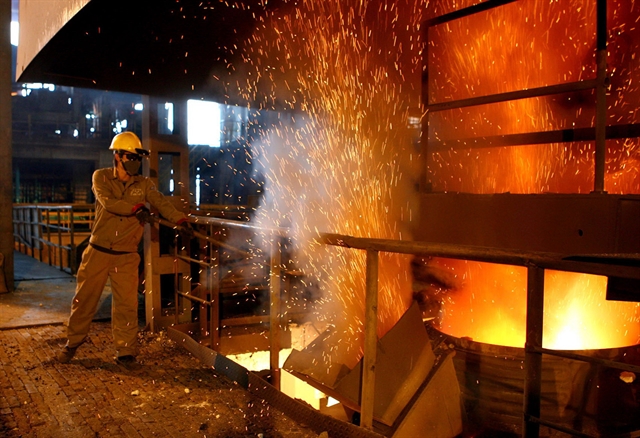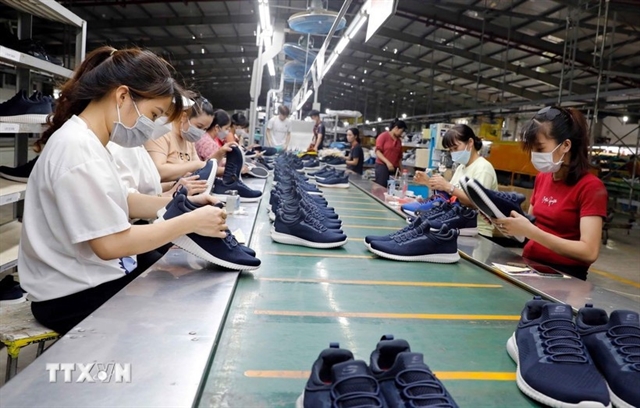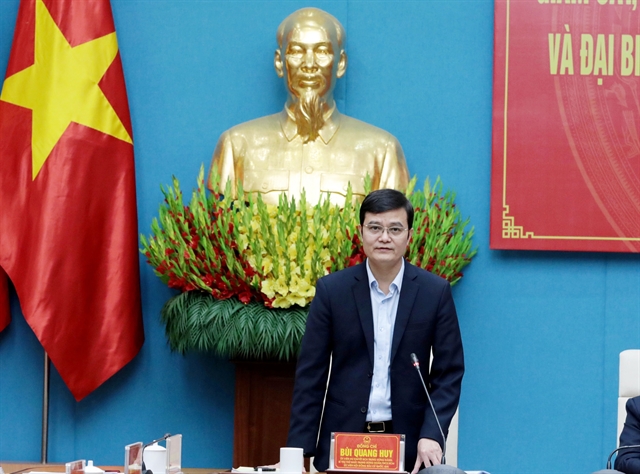 Economy
Economy

Revitalisation and innovation are indispensable for Vietnamese businesses to improve their competitiveness.

|
| A steel furnace at the factory of Hoà Phát Steel Joint Stock Company, Hoà Phát Group in the northern province of Hải Dương. — VNA/VNS Photo Huy Hùng |
HÀ NỘI — Revitalisation and innovation are indispensable for Vietnamese businesses to improve their competitiveness.
The statement was made by Đặng Nguyên Anh, Vice President of the Việt Nam Academy of Social Sciences (VASS), at a conference to announce the Report on Productivity and Competitiveness of Vietnamese Enterprises, published by VASS, the Ministry of Planning and Investment and the United Nations Development Programme (UNDP), on Friday in Hà Nội.
“With income per capita expected to reach US$3,000 by 2020, according to the World Economic Forum, Việt Nam has overcome the period that growth relies heavily on the value added-to-input ratios and is shifting to the new period where growth is mainly attributed to efficiency and productivity,” Nguyên Anh said.
The growth drivers, which helped Việt Nam achieved high growth rates during the years of the Đổi mới (Renewal) process, such as mineral resources and cheap labour, were now no longer the main motivations for growth.
Therefore, Việt Nam needed to transform the growth model towards more reliance on increasing productivity, innovation and competitiveness of businesses, Nguyên Anh said.
According to the Report, Việt Nam's Industrial Competitiveness Index (ICI), manufacturing exports and Revealed Comparative Advantage (RCA) have continuously improved compared to other countries.
In some indicators (such as the value-added-to-output ratio and RCA), Việt Nam outperformed India and Bangladesh. But in other manufacturing performance indicators, especially labour productivity, Việt Nam lagged behind comparative countries.
Việt Nam's manufacturing labour productivity remained around a quarter of China’s and Malaysia’s, one third of Indonesia’s and the Philippines', a half of India’s and Thailand’s, and just around 7 per cent of Japan’s and South Korea’s in 2015.
The report also recommended that Việt Nam prioritise the enhancement of domestic private enterprises’ productivity and competitiveness during its next development stage and as integral parts of public investment, speed up the reformation of State-owned enterprises and improve FDI policies.
Specifically, Việt Nam needed to shift its focus from quantity to attraction of higher-quality FDI and bridge gaps between domestic private enterprises and FDI enterprises.
The most important thing is that higher-quality FDI firms should be long-term partnerships with local firms (as key players in production chains). The Government should co-operate with such FDI firms in a “win-win” approach, to support capacity development of domestic firms, help them benefit from technology transfers and connect them as first-tier suppliers to leading FDI firms and global value chains, the report said.
However, according to Nguyễn Thắng, director of the VASS’s Centre for Analysis and Forecasting, the selection of high-quality FDI investors remained a big issue.
"To attract a high-quality FDI investor, it is crucial to create good policies and favourable conditions, especially in availability of infrastructure, logistics, as well as high-skilled human resources,” Thắng said.
When the FDI inflows into Việt Nam thrive and move more continuously, the customs system must also respond quickly to the changes, Thắng added.
According to Caitlin Wiesen, United Nations Development Programme (UNDP) Resident Representative, enhancing the productivity of manufacturing enterprises is imperative for Việt Nam to avoid a middle-income trap and achieve inclusive growth.
Key policy objectives should support domestic private firms to grow in size, and enhance productivity and competitiveness through development of local value chains, with special attention paid to facilitating the emergence of big domestic firms to lead domestic value chains and become significant global value chain players, she said. — VNS




